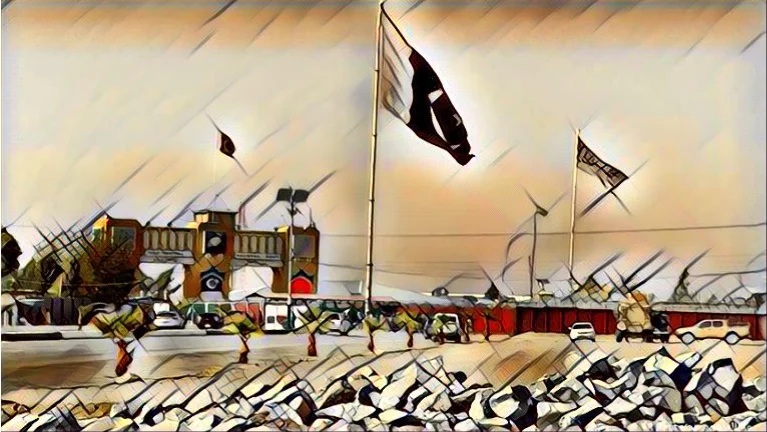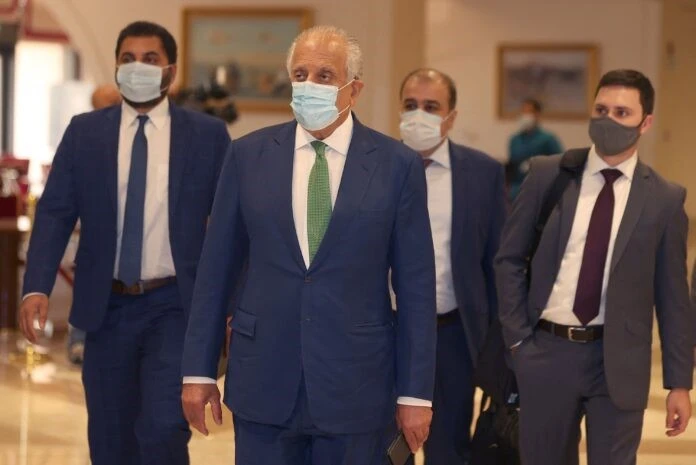On a warm July morning in 2024, the first rays of sun hit the newly opened gates of the Chaman-Spin Boldak Crossing. The air was buzzing with life returning to normal for the first time in ten long months. Vendors were shouting their wares, children laughed as they crossed the threshold, and traders were back on their daily commute. The closure, which had started in October 2023, had left this busy crossing eerily silent. But now, with the gates open, the stream of about 10,000 daily commuters was back, weaving new threads into the intricate fabric of life that binds Chaman and Spin Boldak. This was more than the end of a closure; it was the revival of a lifeline, breathing life back into the history of this important border.
A Border’s Story: Chaman-Spin Boldak Through the Ages
The Chaman-Spin Boldak Crossing has been a major point of trade and movement between Pakistan and Afghanistan for a long time. It has been closed and opened several times in the past, each time reflecting the changing dynamics of the region and security concerns. For example, when it was closed in 2016, the local economy of Chaman suffered a huge loss, with trade activities reduced by almost 50%. The impact was similar during previous closures, affecting over 30,000 people who depend on this border for their livelihood.
The border was opened briefly in January 2017 and then closed again in March 2017 due to security concerns. Each time it was opened, it was a ray of hope for the local communities, but often short-lived as geopolitical tensions and security threats forced it to close again.
Each closure affected not only trade but also the daily lives of thousands. The economic impact was severe; markets went dry, and businesses struggled to survive. Historical records show that during prolonged closures, local unemployment rates went up to 20%, and prices of essential items skyrocketed due to disrupted supply chains.
Closure, Policy Change And The Voices of the Borderland
In October 2023, the government introduced a new policy of passports and visas for cross-border travel at the Chaman-Spin Boldak Crossing. This decision was taken after several high-profile security breaches and threats. The policy, decided by the national apex committee, was a very strict one to boost national security. However, it soon became clear that the policy was not feasible for the locals. Over 500 truckers were stranded, trade worth millions of dollars was halted, and the daily routine of around 10,000 people was severely affected.
Local people, traders, and political parties strongly opposed the policy. A survey in November 2023 showed that 85% of Chaman’s population was against the new travel restrictions, calling them unfair and economically harmful.
The next few months saw protests by Chaman residents. The Perlat Committee emerged as a key player, representing the local people. Thousands participated in these protests, demanding a return to the old ID card system for cross-border travel. Eight rounds of talks took place, each round high stakes.
Inayatullah Kasi, the former interim home minister of Pakistan who served in the interim provincial government of Balochistan, played a key role in these talks. By July 2024, after long negotiations, an agreement was reached. The government agreed to revert to the ID card system, and as a goodwill gesture, the leaders of the protests were released. This marked the end of long and tough negotiations, and the border was reopened.
![Chaman-Spin Boldak border crossing point [Image: Business Recorder].](https://pkafgyouthforum.com/wp-content/uploads/2024/07/608c7f61ecef1.webp)
Beyond the Border: Chaman’s Reopening and Its Ripple Effects
The effects of reopening the Chaman-Spin Boldak Crossing were immediate. About 10,000 people were moving daily, and trade was back to normal. Local businesses, which had been in limbo for months, saw a 30% increase in activity in the first week. The economic impact was huge, with trade between Chaman and Spin Boldak expected to return to $500 million annually.
The reopening also held promise for better ties. Analysts noted a positive shift in diplomatic engagement, suggesting that this could be a model for resolving other bilateral issues.
On the contrary, the porous Chaman-Spin Boldak border has allowed both legal and illegal trade. While it has been a lifeline for many, it has also become a channel for smuggling goods, narcotics, and weapons. Historically, the border has been part of ancient trade routes of Central Asia, South Asia, and the Middle East, and this legacy continues to shape the economy of the region. Despite official trade channels, a significant portion of the economic activity at the border is in the informal sector, where smuggling and contraband sustain livelihoods and local businesses.
The reopening of the Chaman-Spin Boldak Crossing has broader implications for Pakistan-Afghanistan relationships. It demonstrates the importance of dialogue and negotiation in resolving disputes. The Chaman border issue has been resolved through local leadership and community involvement.
Looking forward, balancing security and open borders will be key. Historical data shows that open borders benefit both economies. A Pakistan Institute of Development Economics (PIDE) study suggests that improved border management and open policies can increase bilateral trade by 40%. Future policies must consider the socio-economic realities of border communities for regional stability and cooperation.
A Look Ahead: The Future of Chaman
The story of the Chaman-Spin Boldak Crossing is one of survival and interdependence. The reopening in July 2024 not only relieved immediate suffering but also gave a glimpse of a more collaborative future between Pakistan and Afghanistan. As both countries navigate their complicated relationship, the lessons from the Chaman border will be key to a more stable and prosperous region. This reopening, driven by the needs and voices of the local people, is proof that mutual understanding and cooperation are the backbone of the Af-Pak region.
This article reflects the author’s perspective and not the official views of the Pak-Afghan Youth Forum (PAYF).


![Chaman-Spin Boldak border crossing point [Image: Business Recorder].](context.core.image.imageCurrentSrc)
![Chaman-Spin Boldak border crossing point [Image: Business Recorder].](selectors.core.image.enlargedImgSrc)

